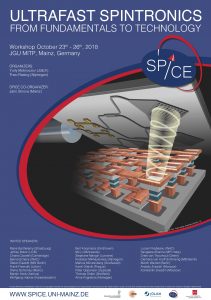Long-range chiral exchange interaction in synthetic antiferromagnets
D.-S. Han, K. Lee, J.-P. Hanke, Y. Mokrousov, K.-W. Kim, W. Yoo, Y. L. W. van Hees, T.-W. Kim, R. Lavrijsen, C.-Y. You, H. J. M. Swagten, M.-H. Jung and M. Kläui,
Nature Materials (2019) https://doi.org/10.1038/s41563-019-0370-z
The exchange interaction governs static and dynamic magnetism. This fundamental interaction comes in two flavours—symmetric and antisymmetric. The symmetric interaction leads to ferro- and antiferromagnetism, and the antisymmetric interaction has attracted significant interest owing to its major role in promoting topologically non-trivial spin textures that promise fast, energy-efficient devices. So far, the antisymmetric exchange interaction has been found to be rather short ranged and limited to a single magnetic layer. Here we report a long-range antisymmetric interlayer exchange interaction in perpendicularly magnetized synthetic antiferromagnets with parallel and antiparallel magnetization alignments. Asymmetric hysteresis loops under an in-plane field reveal a unidirectional and chiral nature of this interaction, which results in canted magnetic structures. We explain our results by considering spin–orbit coupling combined with reduced symmetry in multilayers. Our discovery of a long-range chiral interaction provides an additional handle to engineer magnetic structures and could enable three-dimensional topological structures.


